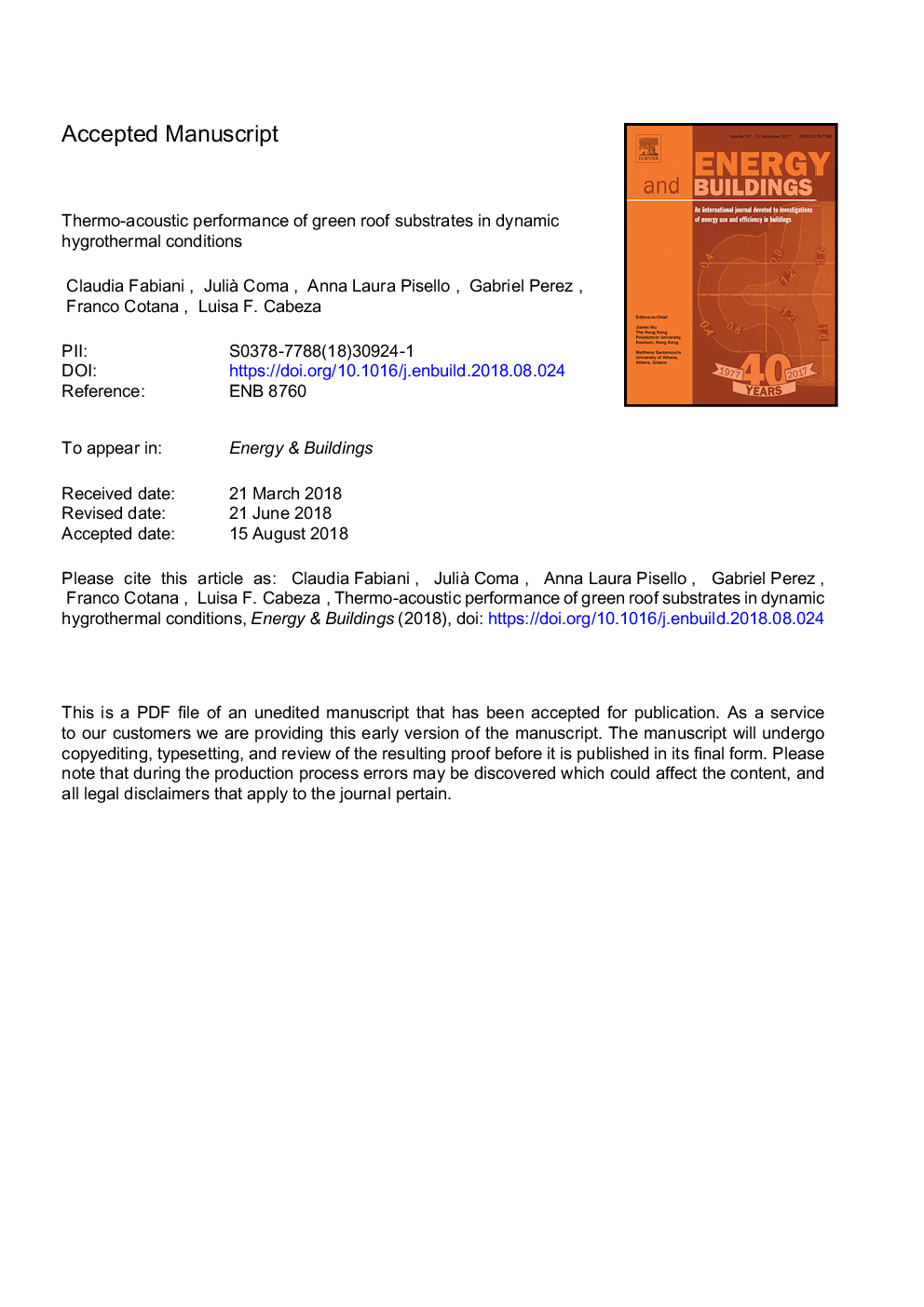| کد مقاله | کد نشریه | سال انتشار | مقاله انگلیسی | نسخه تمام متن |
|---|---|---|---|---|
| 10145860 | 1646369 | 2018 | 25 صفحه PDF | دانلود رایگان |
عنوان انگلیسی مقاله ISI
Thermo-acoustic performance of green roof substrates in dynamic hygrothermal conditions
ترجمه فارسی عنوان
عملکرد حرارتی آکوستیک زیربنای سبز سبز در شرایط پویا هیروترمال
دانلود مقاله + سفارش ترجمه
دانلود مقاله ISI انگلیسی
رایگان برای ایرانیان
کلمات کلیدی
سقف های سبز، بسترها، شرایط دینامیک، عایق حرارتی، جذب آکوستیک و عایق، بهره وری انرژی در ساختمان ها، خنک کننده منفعل،
موضوعات مرتبط
مهندسی و علوم پایه
مهندسی انرژی
انرژی های تجدید پذیر، توسعه پایدار و محیط زیست
چکیده انگلیسی
Green roofs can be considered as effective and esthetically appreciated passive tools for energy saving systems in buildings. In particular, the effect of evapotranspiration and the large thermal inertia of such solutions, represent highly attractive properties to be implemented in advanced building envelope components. Although these properties are deeply influenced by external factors such as weather conditions, and greenery dynamics, the materials used in substrate and drainage layers are too commonly assumed as constant thermal insulation layers depending only on their physical properties and water content. In particular, common disaggregated materials used in internal layers of extensive green roofs, generally are characterized by a highly complex matrix, and consequently, such materials usually lack of realistic thermal-acoustic properties evaluation. The main objective of the study is to investigate the impact of water content on the thermo-acoustic performance of different disaggregated materials from green roofs substrates commonly used in Mediterranean climates. In particular, the TPS method was used to assess the effect of humidification and raining processes on the final performance of the considered samples. An extensive acoustic characterization was also developed, based on the acoustic transfer function method. Results show that raining processes can highly influence the thermal performance of such materials, which depending on their density, can even triple their thermal conductivity value and achieve twice the volumetric specific heat at ambient conditions. Furthermore, the acoustic characterization procedure showed that the biggest modification on the final acoustic absorption and insulation capability, i.e. about 20â¯dB when the 80â¯mm samples, was produced by increasing the water content of the system from 10% to 30% RH. On the contrary, the conditioning at 90% RH does not produce significant differences of the final acoustic behavior of the substrates.
ناشر
Database: Elsevier - ScienceDirect (ساینس دایرکت)
Journal: Energy and Buildings - Volume 178, 1 November 2018, Pages 140-153
Journal: Energy and Buildings - Volume 178, 1 November 2018, Pages 140-153
نویسندگان
Claudia Fabiani, Julià Coma, Anna Laura Pisello, Gabriel Perez, Franco Cotana, Luisa F. Cabeza,
